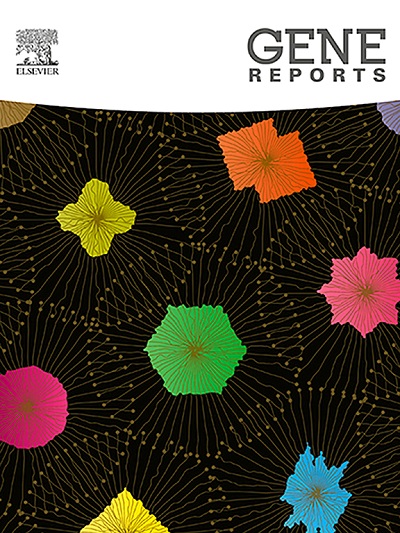探索提高脂肪组织干细胞疗效的草药预处理策略
IF 1
Q4 GENETICS & HEREDITY
引用次数: 0
摘要
间充质干细胞(MSCs),特别是来自脂肪组织的间充质干细胞的应用已成为再生医学的焦点,显示出有效细胞疗法的潜力。脂肪来源的干细胞(ASCs)为治疗各种疾病带来了希望,但其存活率和整合率却受到移植后以损伤部位的炎症和氧化应激为特征的恶劣环境的阻碍。鸡血藤、刺五加和甘草这三种植物因富含酚类化合物和类黄酮而具有强大的抗氧化功能。本研究深入研究并对比了从真皮劳桑、紫草和甘草中提取的水醇提取物对人类脂肪组织干细胞的影响,并将其作为一种预处理方法,以减轻细胞疗法中的氧化应激。从盆腔和腹部分离出 ASCs,使用流式细胞术对其进行鉴定,并促使其分化为成脂系和成骨系。然后将它们置于不同浓度、不同时间段的上述草药提取物中,再进行 MIC 和 MTT 分析。MTT(3-[4,5-dimethylthiazol-2-yl]-2,5-diphenyltetrazolium bromide)测定法和最小抑制浓度(MIC)测定法均用于评估物质对细胞活力和细胞生长接受性的影响。从 ASCs 提取 RNA 并通过实时 PCR 评估抗氧化基因的表达。流式细胞仪数据证实了从 ASCs 分离的细胞中存在间充质干细胞标记。对草药提取物浓度的分析表明,50 纳克/毫升的草药提取物对间叶干细胞有毒性作用,从而确定了脂肪来源间叶干细胞的毒性参考点。实时 PCR 结果显示,使用水醇提取物进行预处理后,抗氧化基因的表达明显增加。这项研究首次强调了用这些提取物对h.ASCs进行预处理的安全性和无毒性,增强了它们在氧化应激条件下的恢复能力和适应能力,从而有可能提高h.ASCs的治疗潜力。茵陈、紫草和甘草的抗氧化特性可通过多种机制提高抗氧化基因(Sod、Gpx 和 Cata)的表达,包括激活 Nrf2(核因子红细胞 2 相关因子 2)等转录因子,从而调节抗氧化基因的表达;调节信号通路,如 MAPK(丝裂原活化蛋白激酶)和 PI3K/Akt(磷脂酰肌醇 3 激酶/蛋白激酶 B);以及影响表观遗传修饰,如组蛋白变化或 DNA 甲基化,从而改变基因表达。然而,要弄清这些植物提取物增强抗氧化基因表达的具体机制,并探索它们在防治氧化应激相关疾病方面的潜在治疗应用,还需要进一步的研究。未来的建议应考虑更多的基因调查和体内应用,以及预处理的长期影响。本文章由计算机程序翻译,如有差异,请以英文原文为准。
Exploring herbal preconditioning strategies to improve adipose tissue stem cell therapy efficacy
The application of mesenchymal stem cells (MSCs), specifically those sourced from adipose tissue, has become a focal point in regenerative medicine, showing potential for effective cell therapy. Adipose-derived stem cells (ASCs) offer hope in treating various conditions, yet their viability and integration rates are hindered by the harsh post-transplantation environment marked by inflammation and oxidative stress at the injury site. Lawsonia inermis (henna), Zizyphus spina-christi (Christ's Thorn), and Glycyrrhiza glabra (licorice) are three plants known for their potent antioxidant properties primarily due to their rich content of phenolic compounds and flavonoids. Their potential health benefits make them valuable in both traditional medicine and modern therapeutic applications.
This research delves into investigating and contrasting the effects of hydroalcoholic extracts from Lawsonia inermis, Zizyphus spina-christi, and Glycyrrhiza glabra on human adipose tissue stem cells as a pre-conditioning method to alleviate oxidative stress in cell therapy. ASCs were isolated from the pelvic cavity and abdomen, characterized using flow cytometry, and prompted to differentiate into adipogenic and osteogenic lineages. They were then subjected to different concentrations of the aforementioned herbal extracts at varying time frames, followed by MIC and MTT analysis. The MTT (3-[4,5-dimethylthiazol-2-yl]-2,5-diphenyltetrazolium bromide) assay and the Minimum Inhibitory Concentration (MIC) assay are both used to evaluate the effects of substances on cell viability and cell growth receptively. RNA extraction from ASCs and evaluation of antioxidant gene expression were conducted via Real-time PCR. Flow cytometry data confirmed the presence of MSC markers in the isolated cells from ASCs. Analysis of the herbal extract concentrations revealed that 50 ng/ml had a toxic effect on ASCs, establishing a toxicity reference point for adipose-derived MSCs. Real-time PCR results showcased a notable increase in the expression of antioxidant genes post-preconditioning with hydroalcoholic extracts. This study underscores, for the first time, the safety and lack of toxicity of preconditioning with these extracts for h.ASCs, enhancing their resilience and acclimatization under oxidative stress conditions, potentially boosting the therapeutic potential of h.ASCs. The antioxidant properties of Lawsonia inermis, Zizyphus spina-christi, and Glycyrrhiza glabra may enhance the expression of antioxidant genes (Sod, Gpx and Cata) through several mechanisms, including the activation of transcription factors like Nrf2 (Nuclear factor erythroid 2-related factor 2), which regulates antioxidant gene expression; modulation of signaling pathways such as MAPK (Mitogen-Activated Protein Kinase) and PI3K/Akt (Phosphoinositide 3-kinase/Protein Kinase B); and influencing epigenetic modifications like histone changes or DNA methylation that can alter gene expression. However, further research is necessary to clarify the specific mechanisms by which these plant extracts enhance antioxidant gene expression and to explore their potential therapeutic applications in combating oxidative stress-related diseases. Future proposals should consider more gene investigation and in vivo applications, as well as the long-term effects of pre-conditioning.
求助全文
通过发布文献求助,成功后即可免费获取论文全文。
去求助
来源期刊

Gene Reports
Biochemistry, Genetics and Molecular Biology-Genetics
CiteScore
3.30
自引率
7.70%
发文量
246
审稿时长
49 days
期刊介绍:
Gene Reports publishes papers that focus on the regulation, expression, function and evolution of genes in all biological contexts, including all prokaryotic and eukaryotic organisms, as well as viruses. Gene Reports strives to be a very diverse journal and topics in all fields will be considered for publication. Although not limited to the following, some general topics include: DNA Organization, Replication & Evolution -Focus on genomic DNA (chromosomal organization, comparative genomics, DNA replication, DNA repair, mobile DNA, mitochondrial DNA, chloroplast DNA). Expression & Function - Focus on functional RNAs (microRNAs, tRNAs, rRNAs, mRNA splicing, alternative polyadenylation) Regulation - Focus on processes that mediate gene-read out (epigenetics, chromatin, histone code, transcription, translation, protein degradation). Cell Signaling - Focus on mechanisms that control information flow into the nucleus to control gene expression (kinase and phosphatase pathways controlled by extra-cellular ligands, Wnt, Notch, TGFbeta/BMPs, FGFs, IGFs etc.) Profiling of gene expression and genetic variation - Focus on high throughput approaches (e.g., DeepSeq, ChIP-Seq, Affymetrix microarrays, proteomics) that define gene regulatory circuitry, molecular pathways and protein/protein networks. Genetics - Focus on development in model organisms (e.g., mouse, frog, fruit fly, worm), human genetic variation, population genetics, as well as agricultural and veterinary genetics. Molecular Pathology & Regenerative Medicine - Focus on the deregulation of molecular processes in human diseases and mechanisms supporting regeneration of tissues through pluripotent or multipotent stem cells.
 求助内容:
求助内容: 应助结果提醒方式:
应助结果提醒方式:


